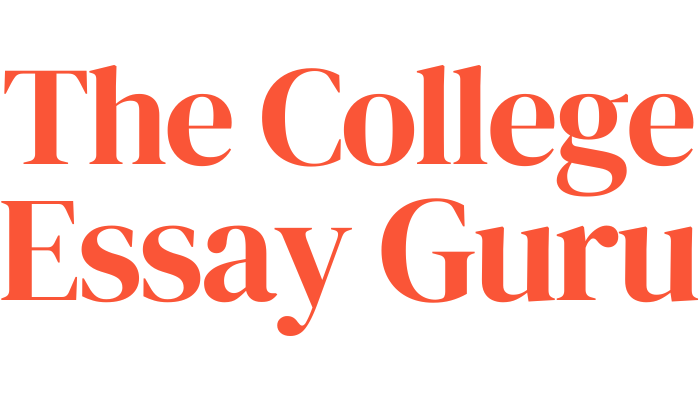What to Do While Waiting for College Decisions
Photo by Ian Schneider on Unsplash
Congratulations! You’ve hit the "Submit" button on your college applications, and now you’re in that limbo period—waiting for acceptance or rejection letters and gearing up to make the big decision. This time can feel uncertain, but it’s also an opportunity to prepare, reflect, and grow. Here are some productive and enjoyable ways to make the most of it:
1. Celebrate Your Accomplishments
Filing applications is no small feat. Celebrate your hard work and dedication—whether it’s treating yourself to a favorite meal, spending time with friends, or enjoying a hobby. Recognize how much you’ve already achieved.
2. Keep Up With Your Senior Year
Your senior year grades still matter. Colleges will review your final transcript, so maintain your focus and commitment to your coursework. Strong grades can reinforce your candidacy, and more importantly, they’ll keep you prepared for the rigor of college academics.
3. Explore Scholarships
While you’ve likely submitted the FAFSA or other financial aid forms, there’s still time to apply for outside scholarships. Many organizations have deadlines in the winter and spring, so look for opportunities to reduce your future financial burden.
4. Research Your Colleges More Deeply
Take a closer look at the schools you’ve applied to. Attend virtual or in-person events, follow their social media accounts, and join admitted student groups if they’re available. If you’re able, plan visits to campuses you’re seriously considering. Picture yourself there—does it feel like the right fit?
5. Reflect on Your Priorities
Take time to think about what matters most to you in a college experience. Is it the academic programs? Extracurricular opportunities? Campus culture? Location? As you wait for decisions, refine your criteria so you’ll feel more confident when it’s time to choose.
6. Stay Engaged in Extracurriculars
Keep participating in the activities you love. Not only will this demonstrate consistency and dedication to colleges (especially if you’re waitlisted), but it will also keep you connected to your passions and provide a sense of normalcy during this transitional period.
7. Try Something New
This waiting period is a great time to pick up a new skill or hobby. Whether it’s learning to cook, volunteering in your community, starting a creative project, or exploring a potential career interest, these experiences can enrich your life and even spark ideas for your future.
8. Practice Patience and Positivity
Waiting can be stressful, but remember that you’ve done everything you can. Trust the process and focus on the aspects of your life you can control. Surround yourself with supportive people, and try to keep a positive mindset.
9. Discuss Your Options with Family and Mentors
When decisions start rolling in, you’ll need a plan for weighing your options. Start having conversations now with your family, school counselors, or trusted mentors about how to evaluate financial aid offers, academic programs, and other key factors. Their input can help guide your decision-making process.
10. Plan for the Transition to College
Use this time to prepare for the practical aspects of college life. Research dorm essentials, think about how you’ll manage your finances, or explore summer opportunities like internships, part-time jobs, or travel. Getting a head start can ease your transition.
11. Stay Open to All Outcomes
Not every letter will bring the news you’re hoping for, and that’s okay. Keep in mind that there are many paths to success, and you’ll thrive wherever you end up. Trust yourself to make the most of the opportunities ahead.
This in-between phase can feel like a rollercoaster, but it’s also an exciting time to prepare for the next chapter of your life. By staying proactive and reflective, you’ll be ready to make an informed decision when the time comes. Remember, the hard work you’ve already put in has set you up for success—now it’s just about finding the right fit for you!
Photo by Vladislav Babienko on Unsplash
FAFSA 2024-5
Hey there Class of 2025 parents & guardians & students!
It’s September, which means it’s time to make the decision about whether to apply for need-based financial aid for the 2025-2026 academic year. If you decide to apply, the required forms and deadlines vary school to school. It is the student and family’s responsibility to keep track of this information that is posted on each college’s website.
Here is some information to guide you.
A big thanks to Jeff Levy and the Big J Team for putting together & offering this content.
If the student is a U.S. citizen or eligible non-citizen, each institution will require submission of the Free Application for Federal Student Aid (FAFSA). Because of recent technology challenges, the FAFSA will be available on December 1, 2024, two months later than usual.
About 170 colleges and universities also require submission of the CSS Profile for need-based aid consideration. This list of schools can be found here, but always best to verify with the institution itself. The first day the CSS Profile will be available is October 1, 2024.
If the student is not a U.S. citizen or eligible non-citizen, the financial aid policy and application process varies by institution. In most cases you will need to file either the CSS Profile or an institution-specific form. Check with each institution for their instructions. To see which institutions give financial aid to international students, refer to our international financial aid resource.
Who should apply for financial aid?
Anyone who thinks they may qualify for need-based aid at any point during their undergraduate years should apply as an incoming freshman. Some colleges may impose a one-year waiting period on students who require need-based aid in later years and did not apply as incoming freshmen. Others may disallow institutional aid for all four years (typically the case for international students). Unexpected financial events can occur, so best to plan for worst-case scenarios.
Anyone applying for merit aid at institutions that require the FAFSA or CSS Profile for consideration for such awards. Although the vast majority of schools do not require the FAFSA or CSS Profile for merit aid consideration, it is best to verify on each college’s website or with the admission office.
Is there a disadvantage in applying for financial aid?
Sometimes. Higher ed institutions are businesses that try to meet net tuition revenue goals. In the final stages of building a class, an applicant with moderate to substantial need may lose out to an applicant with no projected need.
Does this mean that full-pay applicants always receive an advantage over applicants with need? No. Each year, colleges hope to admit the best freshman class in its history, not the least expensive.
Who should not apply for financial aid?
If the sticker price is not a financial burden, and you are confident there will be no significant financial hardships during the student’s undergraduate years, then there is no reason to submit the FAFSA or CSS Profile.
Don’t some states require submission of the FAFSA?
Yes. About a dozen states have already enacted such laws, and others are considering it. But parents can easily opt out.
Anything else important to know before we decide whether to apply for need-based aid?
Yes. For U.S. citizens and eligible non-citizens, the biggest factor in need eligibility is parent and student Adjusted Gross Income (AGI), located on line 11 of the U.S. federal tax Form 1040. The income looked at is from two years prior to the year the student will enroll in college. In other words, if the student will be enrolling in August, 2025, the tax year the FAFSA and CSS Profile look at is 2023.
Parent and student assets are the second most important factor. Reportable assets include savings and checking accounts, investment accounts, real estate (equity in the primary home is excluded from the FAFSA but included on the CSS Profile), and the net worth of a family farm or business. Assets excluded from both forms are qualified retirement accounts, art, jewelry, furniture, and cars.
There is no requirement to list all the student’s colleges on the FAFSA and CSS Profile, just those to which you are applying for need-based aid.
I’m available for more questions or to guide you to more resources.
Linda
10 Tips for Writing Your Personal Statement
While helping a student whose first choice is the University of Washington, I was perusing the admissions page on their website.
U of W’s admissions page also features this video with 10 Tips for writing the Personal Statement. They are great tips for any college admissions essay. Check it out!
Did you know that you can learn a lot about what each college is looking for by reading their Mission Statement and Goals?
Time to Apply for FAFSA!
Let’s get you into college!
Photo by Aron Visuals on Unsplash
Are you a senior applying to college? Or the parent of a senior?
Regardless of your family's economic status, I highly recommend completing the FAFSA or Free Application for Federal Student Aid.
FAFSA applications open on October 1 every year.
What Is FAFSA?
FAFSA is how you apply for federal grants, work-study, and loans with the Free Application for Federal Student Aid (FAFSA®) form. Your college uses your FAFSA data to determine your federal aid eligibility. Many states and colleges use FAFSA data to award their own aid. Your new university will be informed of your FAFSA awards, and the amount is automatically deducted from your tuition costs.
Nearly everyone who applies receives aid of some sort, regardless of their credit history.
It’s the gateway to more than $150 billion in college grants, work-study funds, and federal student loans, as well as certain state-based aid.
Photo by Didier Weemaels on Unsplash
Filling out the FAFSA® form can be a straightforward and easy process. Tips are here!
Apply for FAFSA as early as possible. Why?
1. Financial aid can run out.
Schools and states have limited amounts of student aid available, and some of it is awarded on a first-come, first-served basis.
2. You’re more likely to qualify for grants.
You’re more likely to qualify for federal, state, and college-offered grants. A few financial experts have reported that students who fill out the FAFSA between October and December get twice as many grants, on average, as compared with students who file the FAFSA later.
3. You can focus on other important tasks.
Get it off your to-do list so you can focus on other parts of your college applications, applying for scholarships, and enjoying your senior year!
4. Comparing colleges will be easier.
If you complete the FAFSA earlier in the year, colleges will be able to use that information to come up with your financial aid award letter. You can quickly compare what each school’s cost will be after applying grants and scholarship awards.
5. You can get a head start on your scholarship search.
Some scholarships offered by companies or organizations will request your FAFSA information, and they often have early deadlines. Applying for scholarships will reduce how much you’ll need to take out in student loans, if you plan to.
6. You’ll have more time to pursue other forms of financial aid.
Once you start receiving financial aid award letters, you can come up with a comprehensive plan to pay for college. (Thank you to College Avenue for this comprehensive list!)
And remember to apply for FAFSA at the beginning of each college year!
Mark your calendar for October 1 for the next four years.
And remember: After you apply to FAFSA, the College Essay Guru can help you write essays for scholarship applications! I’d love to help.







